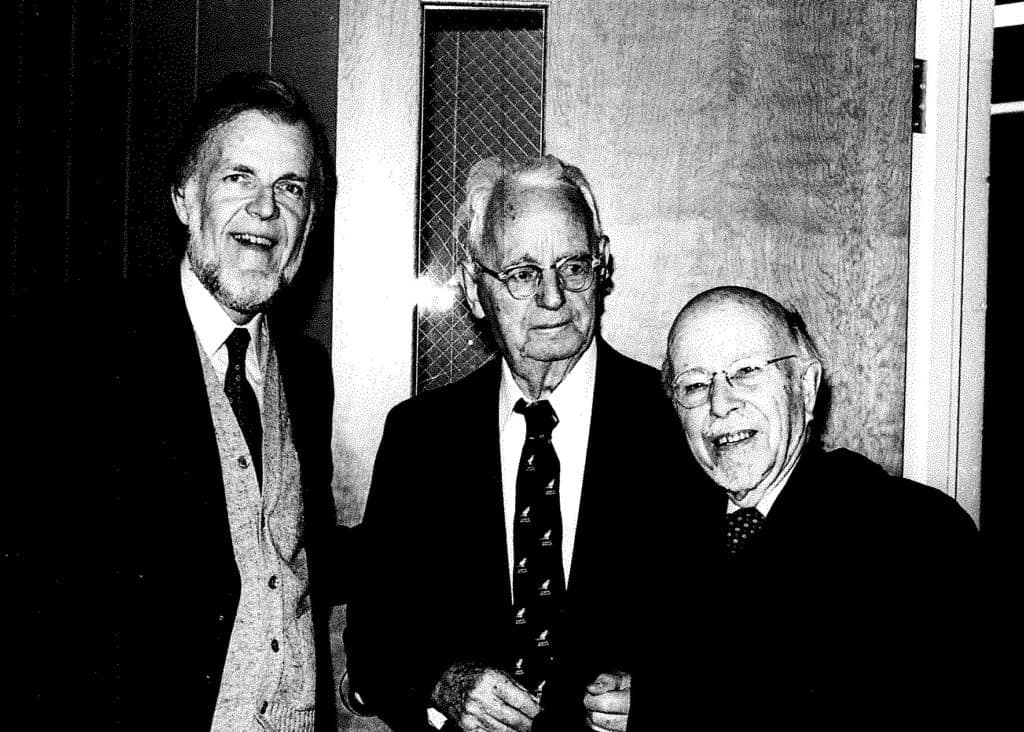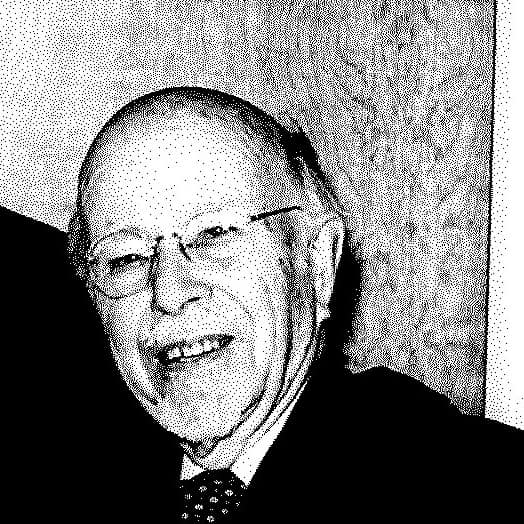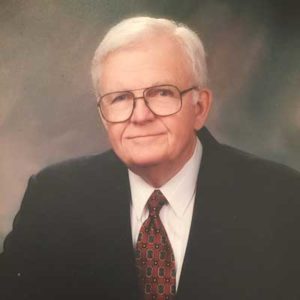What would the late Donald A. McGavran, founder of the Church Growth School of Missions, say to today’s crop of church planters burgeoning around the world? The author imagines six kernels of advice McGavran would pass along.
An explosion of interest in church planting is occurring around the world. New churches are being planted in villages, towns and cities of all sizes. If the late Donald A. McGavran, founder of the Church Growth School of Missions and in many respects my mentor, could see what is happening he would surely exclaim, “Right on! Plant churches vigorously and plant them everywhere!” Then he would probably add, “Be wise in the way you plant them.” My purpose in this article is to pass on some kernels of advice about church planting that McGavran arrived at through meticulous research in many parts of the world, with illustrations from my personal experience.1

1. Emphasize small groups, which in some contexts are called “house churches,” “cells” or “core groups.”
McGavran considered this a nearly universal principle. In small groups three things most often happen. First, unchurched people are drawn to the meetings, they enjoy the fellowship, hear the gospel, and by the grace of God some are saved. As new believers they study the Scriptures, grow in faith and understanding, and their lives are reshaped by God’s Word.
A second thing that often happens is that older believers join the group. Some of them are equipped for leadership and they become mentors to new believers in matters of Christian faith and life.
Third, and this is extremely important, outreach to unsaved and unchurched neighbors becomes a part of the DNA of the group and thus a vital part of everything they do. Christian witnessing takes place by word and deed, with the result that the group grows. At some point the group may decide to divide, with mature members assuming leadership of new groups. In this way the process of evangelism, nurture and outreach is repeated and groups multiply.
What I’ve described is happening all over the world, much of it still uncharted and unreported. Church growth has not always been this way. The house church movement began slowly in the 1960’s and early 70’s, and has grown enormously since then. At first its growth seemed to be limited to work among the poor, but that has changed and it now encompasses all levels of society. The largest churches in parts of Asia and Latin America depend largely on cell groups for Christian outreach, instruction and growth. It is a phenomenon that clearly comes from God.
2. Develop bi-vocational and unpaid leaders.
Wherever there is church growth you find highly motivated people at its center. These people share the vision of growing, multiplying churches, and they are willing to devote precious time and effort to make it happen. And in most cases they do not expect to be paid for their efforts.
Bi-vocational, unpaid leaders live and work everyday shoulder to shoulder with people like themselves. No bit of “clericalism” separates them from unchurched people. They understand their fellow workers and their spiritual journeys. While there are advantages to having workers with formal religious training and salaries to support them, McGavran’s general rule merits serious consideration: Paying local leaders short-circuits growth.
From the moment that a new believer was baptized, training began for service and eventually for leadership. From the bottom to the top of the leadership ladder, all were unpaid, bi-vocational workers.
I once taught a course on evangelism and church planting at a seminary in Macau, off the coast of China, during the final days that the Portuguese flag flew over the island. There were men in the class with a great deal of experience planting and developing churches under difficult circumstances. One day they showed me the outline of a strategy followed by a large house church movement on the mainland. It was based on the principle of multiplying small groups and training volunteer workers for every aspect of church life, witnessing, teaching, and community service. From the moment that a new believer was baptized, training began for service and eventually for leadership. From the bottom to the top of the leadership ladder, all were unpaid, bi-vocational workers. They might receive small gifts from people to whom they ministered, but no salaries. An interesting note that can be added is this: these same Chinese churches are now sending missionaries to places within the borders of China and beyond, and all the missionaries are trained to be self-supporting. Like the Apostle Paul, they are “tentmakers.”
3. Look for responsive segments of the urban population and focus your primary attention on them.
The flip-side of this advice is to identify the resistant parts of society and go lightly here until you have a firm church base established among the more responsive. While the ultimate goal is to reach the entire group, McGavran insisted that the wise course of action is to concentrate first on those that research indicates are more likely to be responsive.
Some people consider this point to be problematic, and they accuse McGavran of being too dependent on sociological research and too fixated on numbers. Yet from the viewpoint of Reformed missiology, there are biblical and theological grounds for taking the gospel first to people and places where there is evidence that God is making people responsive. Jesus himself said that no one can come to him unless the Father who sent him “draws him” (John 6:44). That being the case, a reasonable mission strategy begins with an investigation of the areas of the city where there is evidence that God is drawing people, new churches are being started, and spiritual openness is indicated.
The Bible makes it plain that God’s plan for church planting does not require going everywhere, at all times, to everyone with equal intensity.
The Bible makes it plain that God’s plan for church planting does not require going everywhere, at all times, to everyone with equal intensity. The Apostle Paul followed a strategy that took into account the reality of stiff resistance in some places and greater receptivity in others. Paul learned to submit his personal strategy to God’s sovereignty. There were places where Paul wanted to go, but God closed the doors, and he had to leave those places for a later time or for other workers to tackle. That meant submitting his personal preferences to God’s sovereignty.
Submission to the sovereignty of God in mission planning and strategizing means acknowledging the mysteries of God’s timetable in evangelism and church development. There is much that lies beyond our knowledge or ability to explain. Notwithstanding McGavran’s great emphasis on demographic and sociological research, he was the first to admit that in the final analysis church growth depends on God. Finding those whom he has chosen and makes responsive is more a matter of prayer than anything else, a cardinal truth of which we often need to be reminded.
Some 40 years ago, a group of us learned this truth in an unforgettable way. Donald McGavran had come to Mexico City, a mega-polis on the way to becoming the largest city in the world. As he usually did, McGavran lighted a fire for church planting. A group of us from the Presbyterian Church took McGavran’s advice and proceeded to explore the vast city from every side. We did most of our research on foot, analyzing the neighborhoods and talking face to face with as many people as we could. Two questions were always before our minds: Where and how can we begin?
We were bewildered for weeks. We tried the middle-class areas where we assumed “nice Presbyterians like us” would best fit in, but we were rebuffed over and over. We did our best to start Bible studies in the teeming apartment buildings, both the accessible ones with open stairways and the tall, walled-in buildings with guards, gates and buzzer systems. We managed to hold a few meetings in public housing units, but when neighbors complained the meetings ended. We were haunted by the fact that areas of the city containing tens of thousands of people had no evangelical churches whatsoever, but they were tightly closed both to us and the gospel. We grew increasingly frustrated. We’d done our research and tried our best, but something was missing.
It was at that point that we decided to conduct our planning sessions in a more God-dependent way. Kneeling around a large map of the city spread out on a low coffee table, we began by praying for each part of the city, telling God what we had learned about the people and the needs in each area, and asking for his will to be shown to us. After a few weeks, we began to observe two things: there was fresh wave of unanimity as to where we should go next and what approach we should follow. To our surprise, God led us to areas of the city that we had avoided or given up on earlier. As we began to walk the streets and visit homes in these areas, doors opened in ways that were nothing short of miraculous.
In less than two years we started more house churches than we could handle. The attendees were of three types, quite evenly divided: 1) “Old Stock” evangelicals who had migrated to the city from towns and villages where they had been members of evangelical churches; 2) New converts, won to evangelical faith through the witness of our team and other house church members; and 3) “Mass Media Inquirers,” as we called them. They were people that had learned about the gospel from tract and Bible distribution, radio broadcasts, films and correspondence courses. In some homes these people proudly showed us “graduation certificates” from Bible correspondence schools, and yet they were not baptized and had no church connections until our group came to their door. Without exception, the house churches we planted began in the homes of a family from one of these three groups of people.
Each of these three types of people deserves careful attention by church planters, because there are millions of them scattered throughout large cities, and for the most part they lie “beyond the radar” of most established churches and will not likely be reached without special efforts. To reach them requires a lot of “boots on the ground” type of evangelism.
4. Multiply socio-economic, ethnic and language churches, which in most cases will be culturally homogeneous congregations.
This is another area where McGavran is most often criticized, because his ideas seem to fly in the face of the current emphasis on “diversity.” Church members are made to feel guilty because most congregations remain racially and culturally homogeneous despite efforts to change this. Churches in the Reformed tradition are especially vulnerable in this area due to the fact that some people associate us with the apartheid era in South Africa and the injustice and forced segregation that occurred there.
It is important to understand what McGavran meant when he spoke of homogeneity and the role it plays in church development. His research in scattered parts of the world led him to conclude that there is a significant point of homogeneity in almost every congregation. And in most cases, when people decide to move from their old religion into Christianity, they prefer to affiliate with congregations where their “heart” language is spoken, there is a fair degree of cultural homogeneity, and love bridges the gaps that remain. I interpret McGavran’s analysis of homogeneity as being mainly descriptive of what he found to be, not prescriptive of how he wanted things to be.
Applying the near universal reality of homogeneity in local churches, McGavran began by pointing out that cities consist of vast “mosaics” of people groups, each with its own unique characteristics. All of them need churches that speak their language and can minister sensitively and effectively to their needs. His advice to church planters was to look for homogeneous groups of people that show interest in the gospel, and focus first on them. Build a solid church base there and then move out to reach the more resistant. McGavran echoed this bit of advice time and again: You can’t predict just how and when God will turn stiff resistance into receptiveness.
The primary task of the church in the city is not to detribalize, but to win as many as possible to Christian discipleship. The first business of the church is not ethnic fusion, but spiritual regeneration, trusting that the Holy Spirit in time will work on the rest of the issues.
I once heard McGavran reply to a critic who said his approach sounded like support for “religious tribalism.” McGavran’s answer went like this: The primary task of the church in the city is not to detribalize, but to win as many as possible to Christian discipleship. The first business of the church is not ethnic fusion, but spiritual regeneration, trusting that the Holy Spirit in time will work on the rest of the issues.
I believe that was wise advice.
5. Work to overcome the church building barrier.
House churches provide an answer for at least the initial stage of urban church planting, but experience demonstrates that larger and more adequate facilities eventually become necessary. Where growth in membership is rapid and greater financial resources become available from within the membership, the building problem can be resolved quite quickly.
Churches that are preoccupied with their own financial liabilities are unlikely to encourage new church plants.
In some cases, denominational mission organizations pour large amounts of money into land and buildings for new church starts. The intentions may be commendable but the approach is questionable. It is unlikely to produce outward-looking churches that are continually looking for places to plant new congregations. Churches that are preoccupied with their own financial liabilities are unlikely to encourage new church plants. In light of this, McGavran argued that the property barrier must be overcome if unchurched parts of the urban population are to be reached as quickly as possible. Simply put, the issue comes down to the breadth of the church planters’ vision, the members’ values and their passion for spreading the gospel by multiplying churches.
For new churches to multiply in metropolitan areas, members of existing churches must be willing, for a time at least, to get along by using rented facilities, thus freeing up money to assist new church starts that carry on the vision. Examples of growing, reproducing churches that follow this principle can be found in various places. The largest evangelical church I have attended in Mexico City, Fe y Esperanza, holds eight different worship services every Sunday, with a total attendance of ten thousand. It is housed in a huge old warehouse that is anything but attractive. But oh, the singing! And, best of all, their monthly payments on the building do not prevent them from starting new house churches in every direction. Another example is Redeemer Presbyterian Church in Manhattan, New York, which continues to use rented facilities and at the same time helps dozens of immigrant congregations in the New York area.
6. Communicate intense faith in Christ and the gospel.
Nothing is more important than this, McGavran emphasized, because it is only such churches, and the ministries of such men and women, that can make a major impact in cities. Intense faith, based on Scripture and proclaimed with passion is what grows churches and impacts society. “The city-conquering churches of the first three centuries,” wrote McGavran, “were churches that believed the fundamentals of Christianity and were willing to die for this belief. Their intense faith appealed to the urban worker, and it will do so again today.”2
The urban masses cry out for “social justice,” and who can doubt that greater justice is needed. But, where except in biblical Christianity do you find the basis for genuine social justice? Where but in Christianity have common people ever dared to hope for justice and a better life?
There is nothing more tragic than Christ-less preaching from urban pulpits and programs that change neither lives nor neighborhoods, because they lack the indispensable element of the gospel of God’s saving grace through Christ proclaimed with vigor and conviction. The urban masses cry out for “social justice,” and who can doubt that greater justice is needed. But, where except in biblical Christianity do you find the basis for genuine social justice? Where but in Christianity have common people ever dared to hope for justice and a better life? This means that if we fail to evangelize city people and neglect to plant churches in the hundreds of languages city people speak, we will indeed have failed – failed both the city and the Lord, not for time only but for eternity.
Conclusion
On the busiest street in Colombo, Sri Lanka, there has stood for many years an evangelical Anglican church known as “The Church of the Open Door.” The front door of the church opens directly onto a busy sidewalk that is crowded with pedestrians day and night. The door of the church is never shut, lights are always on, and there are counselors in three languages available to minister to people that walk in from the street. People of all kinds come in and sit down, and less than half of them are Christians. Some simply want a safe place to put down their bags and enjoy a short rest before hurrying on. Others kneel to pray, and it is common to see tears running down weary faces. The church provides counselors almost around the clock, and the counselors listen to peoples’ stories, pray with them, and talk to them about Jesus. One of the pastors shared with some of us how, for decades, the church’s open door on a busy city street has been the key to its witness and service. People come day and night, he said, some seeking God, many with problems they want us to pray about, and others just wanting a safe place to rest a while. As best we can, we point them to Jesus as the only source of hope and salvation, and we do what we can for those with critical needs.
Over the years, this open door ministry has been the way this particular church, located in a crowded, bustling Asian city, answers Christ’s missionary mandate. They found how to do it, right through their front door. Finding how to do this is extremely important, yet also difficult, because teachers are few. Seminaries to which churches entrust the training of their leaders generally do not teach how to reach lost people. Seminaries concentrate mainly, in some cases exclusively, on teaching what to know, teach and preach, but they are tragically weak in showing students how to reach lost people. Consequently, most churches have never learned the how of evangelism. For that reason I admire the late Donald McGavran, for he left us with insights and guidelines related to the how of reaching cities for Christ, and we can still learn from him.
Notes
1 Sources in McGavran’s writings are: Chapter 15, “Discipling Urban Populations” in Understanding Church Growth, first edition (Grand Rapids: Eerdmans, 1970); Effective Evangelism: A Theological Mandate (Phillipsburg: Presbyterian & Reformed Publishing, 1988), and chapter 1 in Guidelines for Urban Church Planting, edited by R. S. Greenway (Grand Rapids: Baker, 2nd printing 1978). McGavran’s “Guidelines” are adapted and applied to wider contexts than McGavran first had in mind. I know that he expected and wanted this to occur.
2 Guidelines, p.17.


